DYPER Brand Review: Are These Safe Plant-based Diapers Worth It?
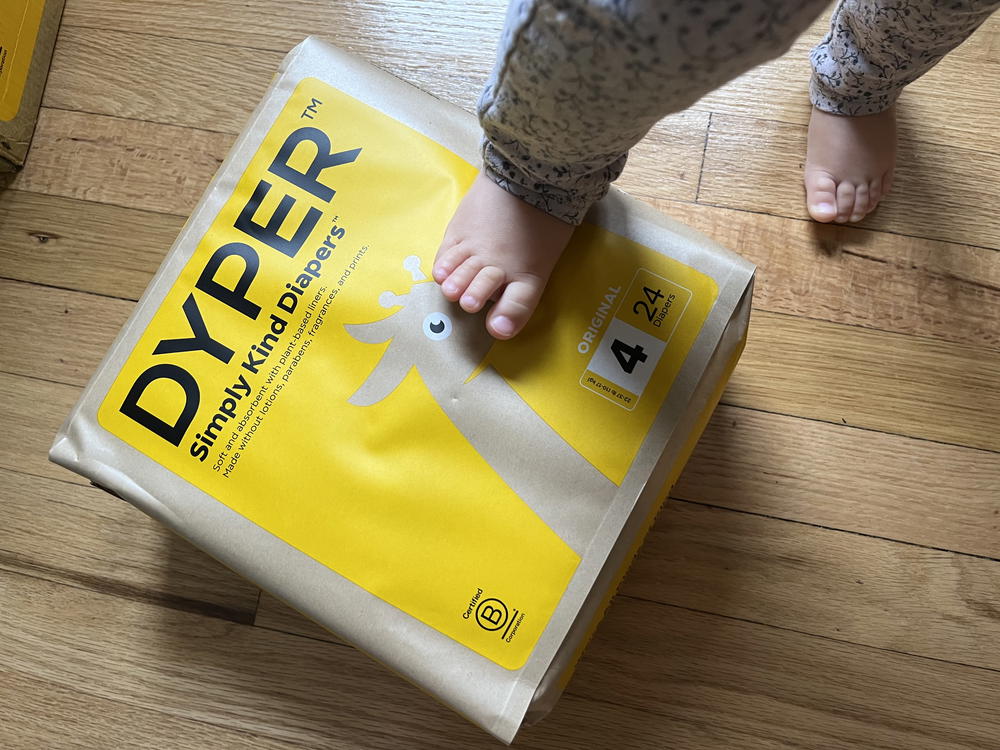
We tried the DYPER Simply Kind diapers and the Charcoal Enhanced diapers! What’s with the hype around this sustainable baby product brand? See my review to learn about my experience.
This article may contain affiliate links. We earn a small commissions when you purchase via those links — and it's free for you. It's only us (Becca & Dan) working on this website, so we value your support! Read our privacy policy and learn more about us.
When I started diapering my first child, a thought went through my head: “So… these diapers are just going into landfill when I throw them out? I’m going through so many per day…”
I was correct: regular diapers that get tossed in my diaper pail go straight to the garbage dump and it takes years for them to break down. Plus, regular diapers from Amazon and Costco are far from plant-based and sustainable.
That’s where DYPER comes in: I tried the brand in my first year of parenting, not knowing the truth behind the brand. Now, I’m trying DYPER again and I want to tell you all about what I’ve learned and if these safe diapers are the world’s solution to a huge problem.
Quick summary on what you’ll learn
- DYPER makes plant-based safe diapers and wipes, as well as other products.
- The company is a certified B Corp, which means DYPER meets rigorous standards of eco-consciousness, environmental friendliness and transparency.
- You’ll find that DYPER products cost slightly more than run-of-the-mill “big baby brands” like Amazon, Costco, Huggies and Pampers diapers. It’s because they used plant-based materials and are clinically tested for skin compatibility with babies.
- See my experience with the regular DYPER products versus the Charcoal Enhanced diapers that I tried.
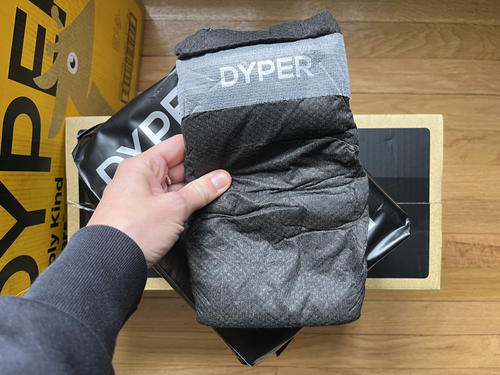
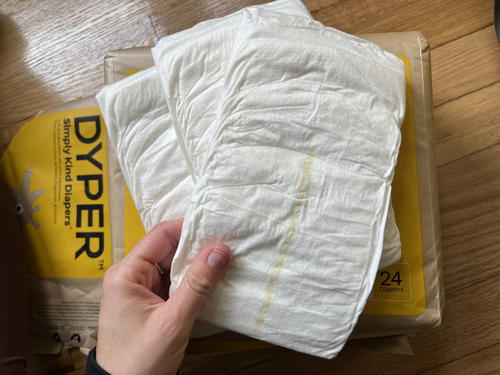
What is DYPER?
DYPER is a company making diapers and wipes that are “simply kind.” And there’s more: in short, DYPER is creating ways to avoid having your child’s soiled diapers go into a garbage truck and out to a landfill. They’re reducing the environmental impact of this country (and the world’s) massive diaper waste problem with the REDYPER program, which returns DYPER’s diapers and wipes for composting via pickup at your home.
Well, that was a lot. The bottom line is that DYPER makes diapers and training pants, plant-based baby wet wipes, baby bath products, accessories like a signature diaper bag for parents and of course, the diaper waste natural disposal service for composting.
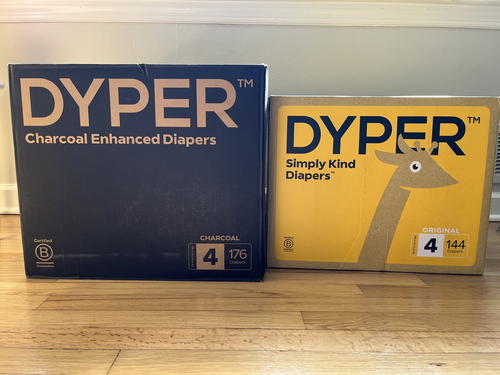
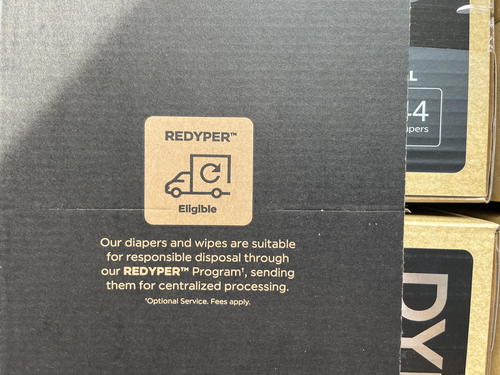
What we tried (diapers)
I tried these products from DYPER:
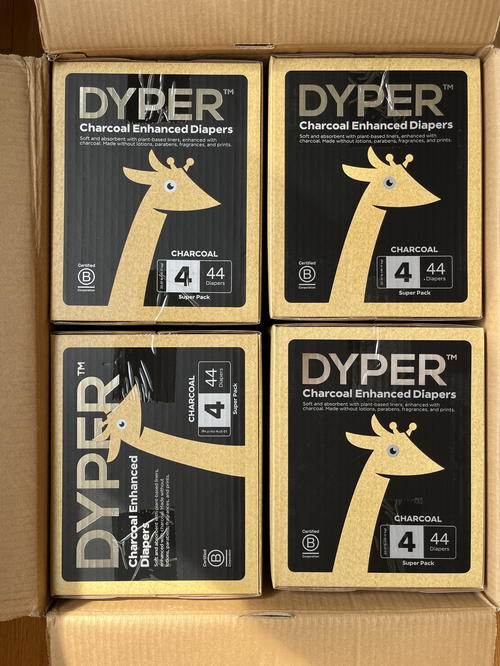
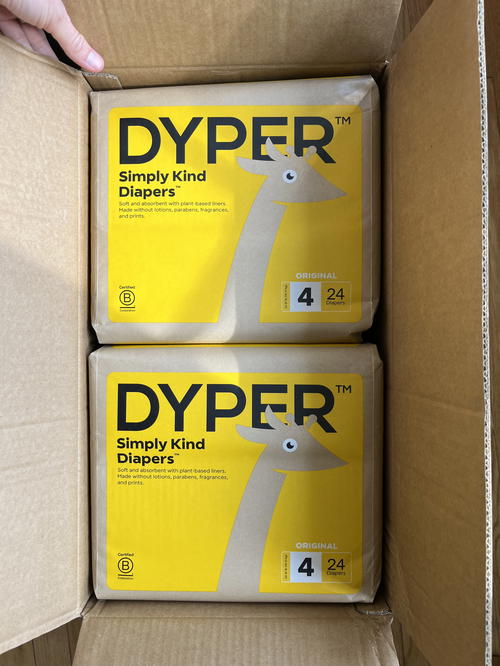
First thoughts and unboxing
It’s no secret that DYPER has great branding: the giraffes on all the packaging make me almost as excited as getting something cute for my daughter like hair bows. I brought her to look at the boxes and pointed out the giraffe, one of her favorite animals at the zoo.
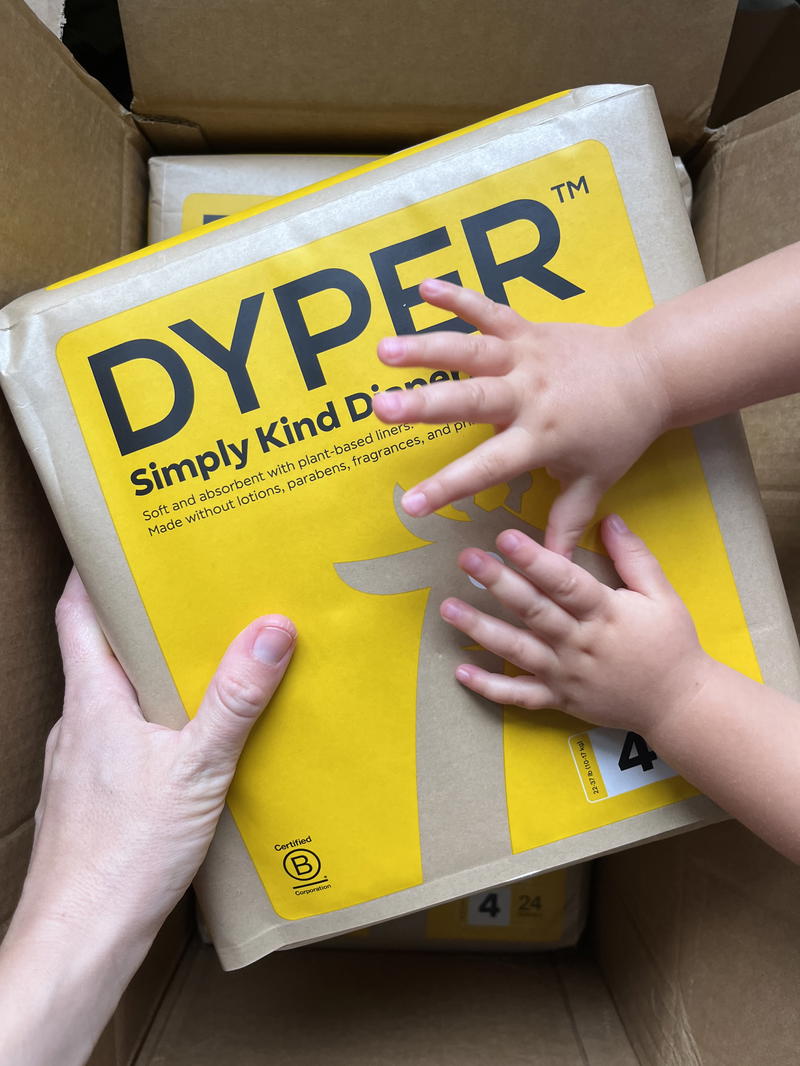
My first thoughts, of course, is that getting DYPER products in the mail is way more exciting than getting the same thing from Huggies, Pampers, Amazon or Costco. The boxes and packaging are fresh and bold, with clear icons and information about the dermatological testing stamps of approval, the B Corp certification, the OEKO TEX standard and the USDA Biobased Product icon.
It’s a lot to digest, but it’s the kind of stuff that makes me feel good as a parent that I have safe and sustainable products in my home for my little one.
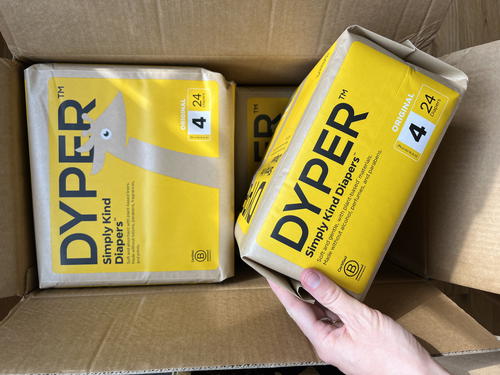

What makes these diapers different
As I opened up several DYPER diapers, I remembered why they were so impressive when I tried a few a year ago in a very different size for a very differently-sized baby. These diapers are soft, made from bamboo viscose, a material with which I feel like I should be very familiar because I see it on clothing labels all the time these days.
DYPER diapers have a modern look to them: if you compare them against Costco’s Kirkland diapers, they’re not goofy or bulky. DYPER diapers fold up more neatly and more manageably in any of my diaper bag fanny packs (I currently use the Sidekick fanny pack diaper bag but pictured below is the Kibou!), which I take on road trips, days out and of course, to the nearby zoo.
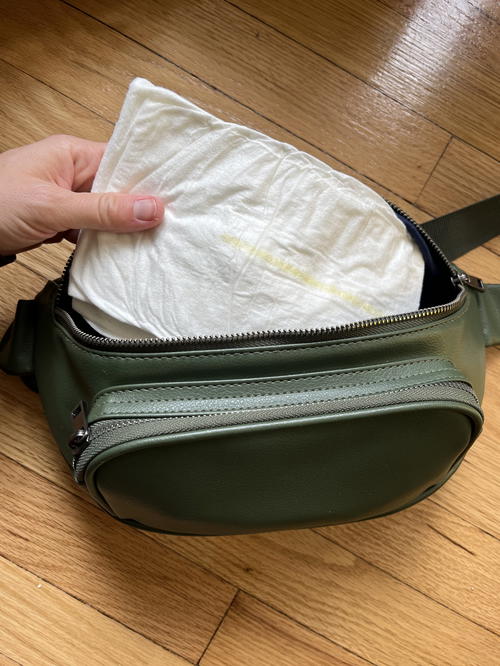
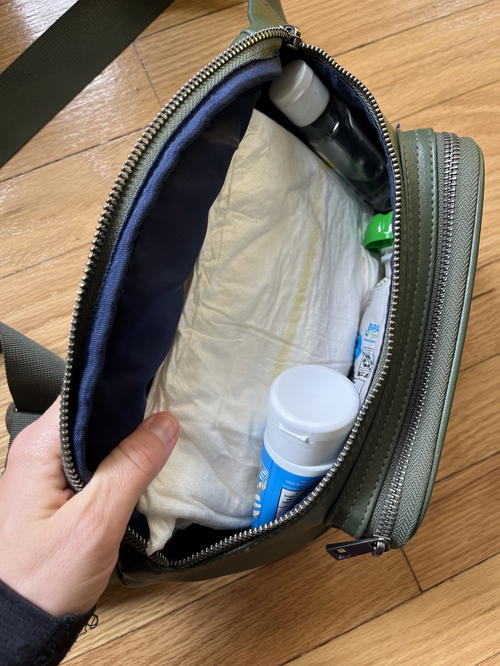
The side tapes for closure are sticky and minimal, and comfortable for a child. They tape neatly when I’m closing up a diaper, and there’s no extraneous fluff or material.
One other thing I have to note is that lately I’ve been experiencing stringiness from the material in Costco diapers. What I mean is that sometimes I open them up and there’s like a string of the material either in the diaper, or elsewhere.
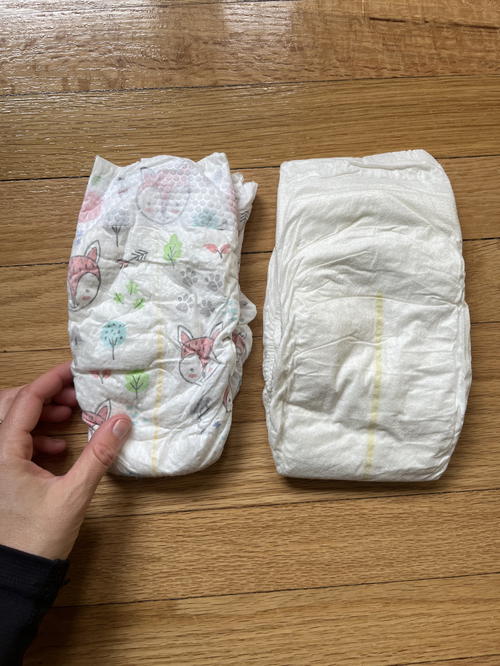
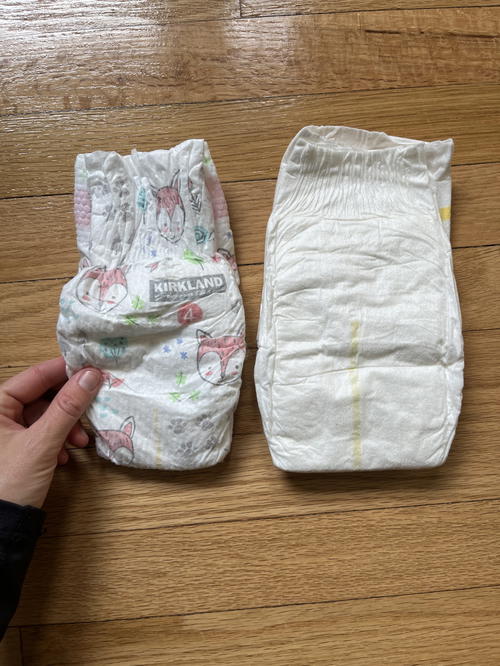
DYPER diapers have nothing like this: they’re so well-made that there’s no way they would come apart during use. They’re made WITHOUT prints, perfumes and alcohols and pulp in the absorbent section is chlorine-free.
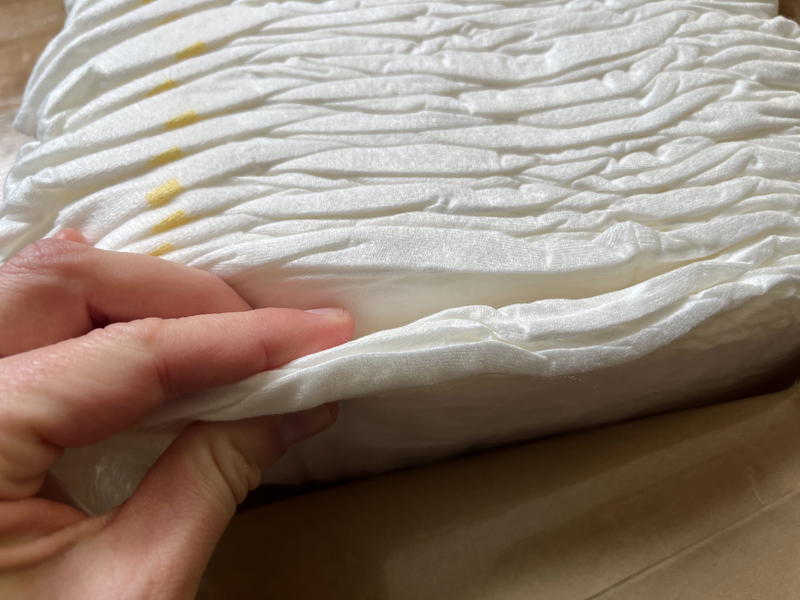
Dyper discount code
You can pick up DYPER on Amazon. Shop here and use code SIMPLYKIND at checkout for 10% off!
Introducing… the Charcoal Diaper?
I’m new to the DYPER Charcoal Diaper. At first I thought, just basically, “What is it?” I looked closely at the package I had opened, and told Dan that, “These diapers feel like shirts.”
They reminded me of Coterie diapers, the “Rolls-Royce of diapers,” which had been explained to me as a great way to get your baby to sleep through the night. I talk about the Coterie difference at my Coterie diaper review.
If there was ever a mysterious, sleek and nearly chic diaper, the DYPER Charcoal is it. I mean, wow: black diapers? Why is no other company doing this? It’s so cool (not that our children care, but as parents, a novelty is always appreciated).
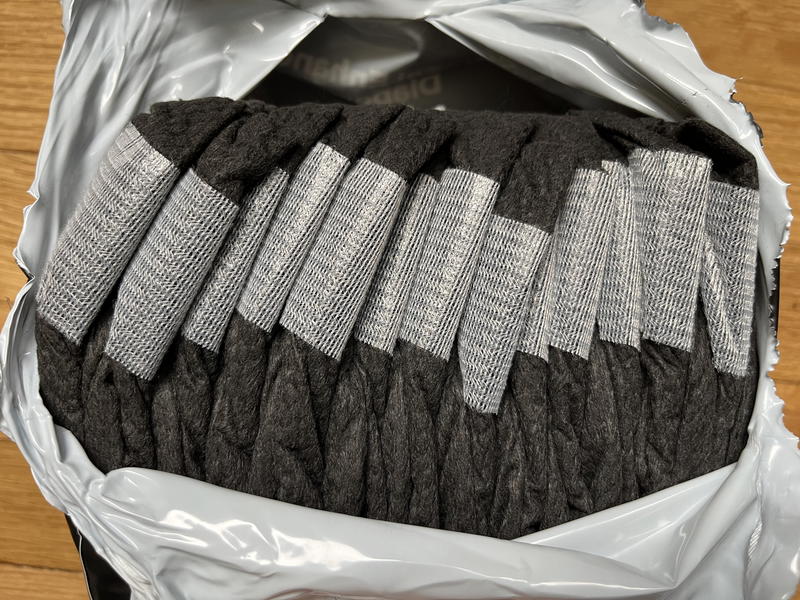
At first, it was not clear to me as to whether or not the Charcoal Diaper is really a different product altogether, when compared to the original DYPER diaper. Is it just that it’s black and slightly more expensive (the Charcoal Enhanced Diaper is priced at a higher cost, for a box of slightly fewer diapers)?

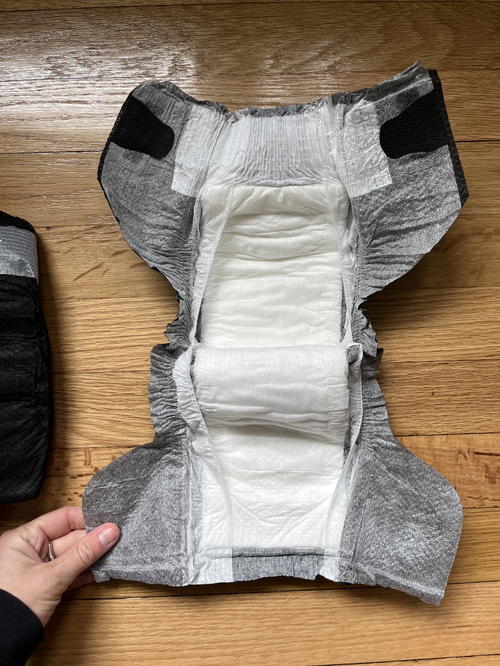
Here are the differences I found, as I plowed through the DYPER website:
- They contain charcoal-infused “Nonwoven” in the outside of the diaper. This is known to be an odor-fighting agent. (Other ingredients are largely the same when compared to the original DYPER product.)
- No difference in certifications: Both have 5-star ratings from DermaTest, and the certification from Standard 100 by OEKO TEX®.
- I read in the reviews (very helpful!) that one complaint is that the Charcoal diapers don’t have the pH wetness indicator line. I think I’ll use them as overnights, in that case!
Why choose the Charcoal upgrade?
Update: Based on the recommendations I’ve seen online about the Charcoal Dyper NOT having the yellow/blue wet line down the middle, I chose to use them for overnight sleep. Lately, with our infant’s sleep usually being 12 hours, they have worked great. No leaks, no rips, no issues.
They’re also very good at concealing scents. And second, they are soft. They feel like T-shirts, and the side flaps are thick and feel like fabric. I’d be happy wearing this diaper! I listed them in my comparison of the best and worst diapers for your baby.
How does the sizing run?
I recall that when I tried out DYPER when my baby was in size 1 that I did note that they ran a little small and narrow. In my era of having scored a lot of baby stuff for free, when I got half a pack from a friend whose baby had outgrown them, I decided to use them first. I used my regular diapers (Huggies or Pampers at the time) after I used up the DYPER diapers, because they were sized with more space.
I’m finding this is largely true in the size my toddler currently uses. I find that Huggies and Pampers are like runners-up in the true-to-size category, while Costco diapers run the largest (or maybe they are the most baggy), but also stretchy.
DYPER diapers are firm, non-bulky and hold their shape, which are all really good qualities in a well-respected diaper for babies and toddlers.
Is DYPER worth it?
Here’s where I will insert my real opinion: DYPER diapers (the original white ones) are worth it if you are committed to saving the environment, a few diapers at a time, because I’m quite convinced that it’s the best we can do as disposable diaper consumers to lessen our carbon footprint.
Other diapers are made of chemical materials and aren’t tested like DYPER products are. They’re not compostable, and they don’t come with services to responsibly dispose of them, like DYPER does. That’s what makes DYPER feel like both a step up in terms of consuming diapers, and actually using them. They are a fairly-made sustainable product that also can return to the ground without being hurtful to our Earth.
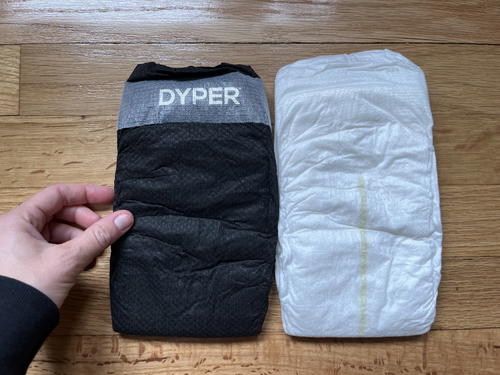
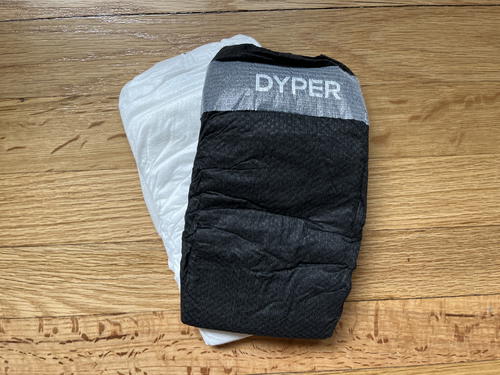
And what about the Charcoal Enhanced?
What I’m not sure is worth it is the Charcoal Enhanced upgrade. With largely the same number of plant-based materials and 95% the same material makeup, I’m not convinced that I’d need to spend more, to get fewer diapers, when the original DYPER product is already great.
Of course, it is really catchy to have your child in black diapers, especially if you have nice occasions to attend frequently. Or, if you like a stand-out factor and you want to talk about where you got your cool eye-catching diapers with all your parent friends.
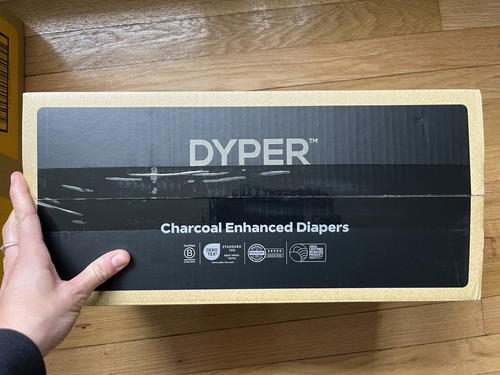
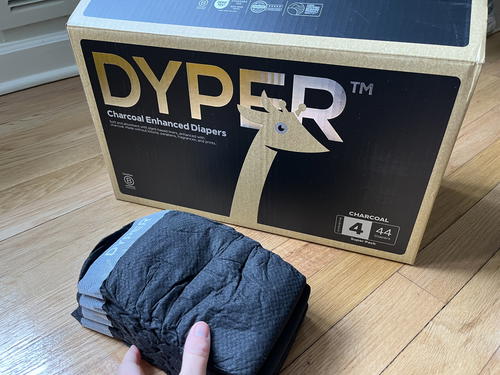
I actually tested the DYPER Charcoal Enhanced diaper vs Kudos diapers for a 12+ hr overnight and it seems to be that the DYPER Charcoal really can’t be beat for absorption. If you’re interested in Kudos diapers, though, for their winning properties like use of cotton in a double diaper liner, head to my Kudos diaper review.
Final thoughts
My main assessment is that DYPER is a company doing great things for a highly disposable and highly consumable product that is unavoidable for parents all over the country and the world.
We’re basically in a diaper tragedy zone, with thousands of them being thrown away every single hour, and it’s only the sustainable plant-based brands like DYPER that are moving forward to help solve the issue.
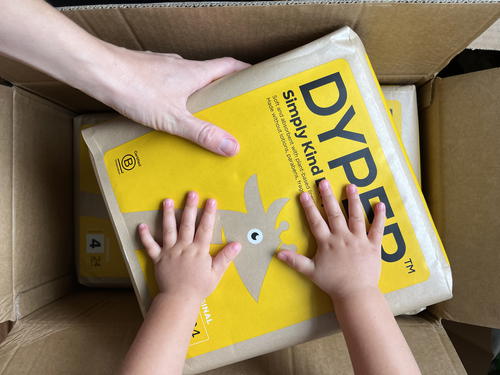
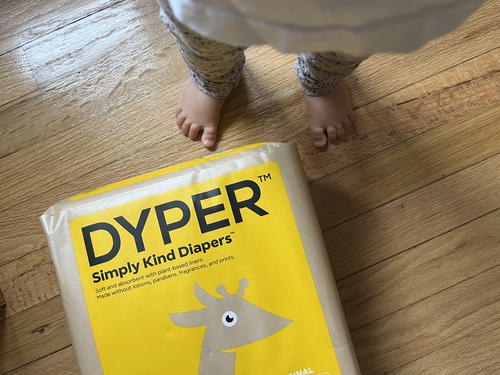
How to get DYPER products
The best place to get DYPER products is via the DYPER website. It’s where I’ve now spent a few hours researching all about the brand in order to bring you this review.
I also found that Amazon sells DYPER products, from the regular DYPER diapers and DYPER training pants to the Charcoal Enhanced. From Amazon, they’d make great essentials for a first baby registry.
Of course, if you’re interested in recurring deliveries of DYPER, you can do that at the DYPER website, where you can save up to $10 per delivery (great way to save money with a baby), and get free shipping, hassle-free returns and free exchanges if a size doesn’t work out. For recurring shipments (pretty convenient), choose from every 1 week to every 12 weeks.
Be sure to read the Refund Policy.


